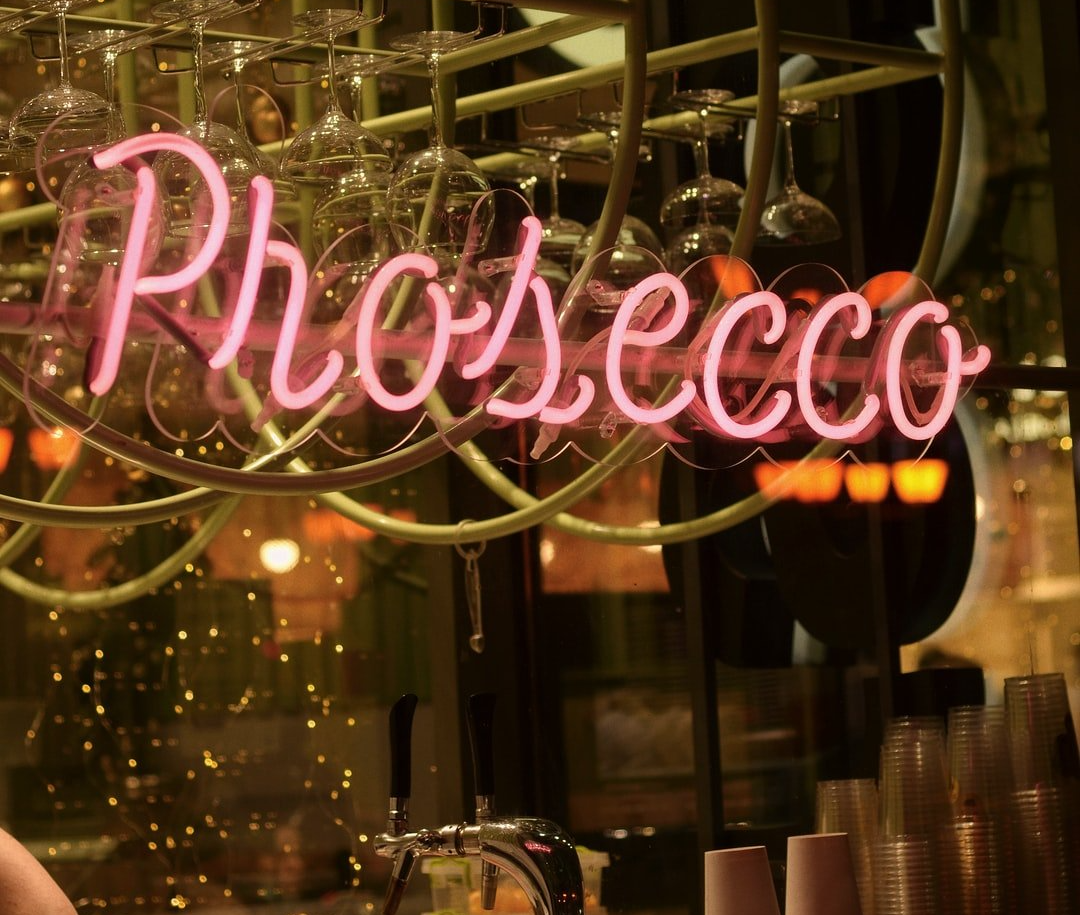6 Facts about Prosecco You Probably Didn’t Know
This is a subtitle for your new post

What is Prosecco? It’s a sparkling wine produced mostly in the Veneto and Friuli regions of Italy. Light, bright, and bubbly, it’s often compared to fine Champagne, without the fine price tag. Today, we’re popping a bottle of Prosecco and toasting to everything we love about this deliciously delightful drink in honor of National Prosecco Day on August 13.
Prosecco is Named After a Village in Italy
Prosecco (the drink) dates back to Ancient Romans who cultivated the grapes and exported the fresh, fruity wine throughout Italy. Its name comes from the village of Prosecco in Italy, where verdant hills have a long history as the home to a very specific grape. Glera grapes are exclusively used to make this sparkling wine, and they have grown in the village of Prosecco for centuries. With unique climate conditions and rich soils, these grapes continue to thrive in the region even to this day.
Prosecco Isn’t Champagne
Prosecco vs Champagne: what's the difference? While Champagne and Prosecco are both sparkling wines, they have some important differences. Champagne comes from grapes grown in the Champagne region of France, while Prosecco is made from Glera grapes grown in Italy. The fermentation process varies as well, with Champagne finished in individual bottles, and Prosecco produced in large vats and then bottled.
Prosecco Is Bubbly...Most of the Time
Prosecco is known for being a popular sparkling wine, but it's not always bubbly. Perlage is the term often used to describe the bubbles in sparkling wine, and Prosecco usually falls somewhere between fully sparkling (spumante) or lightly sparkling (frizzante). However, tranquilo Prosecco is a still wine without bubbles. Light and fruity, still Prosecco comes without the acidity from carbonation.
The “Tank Method” Keeps Prosecco Cheap (and Tasty!)
During the sparkling wine making process, the tank method (or charmat method) is used to make Prosecco. Unlike traditional fermentation, where spirits are finished in individual bottles, Prosecco goes through a second fermentation in sealed pressure tanks before bottling. Here, carbonation naturally occurs as sugars from added yeast break down. This technique is ideal for spirits made from aromatic grapes, as it helps retain more natural aromas and flavors. It also helps keep prices low, as batches are made in bulk.
Bellinis Originally contained Prosecco, Not Champagne
We love a good Bellini! But did you know the original recipe called for Prosecco instead of Champagne? The drink originated in Venice, Italy sometime between 1934 and 1948, where it was made with Prosecco and peach puree.
Proseco Typically Doesn’t Get Better with Age
Some spirits benefit from sitting in a cool dark place; over time flavors round out and intensify. Prosecco, however, does not get better with age. With a higher sugar to acid ratio than Champagne, it's aging potential is quite low. Prosecco doesn't really "spoil," but it will discolor and darken, go stale and flat, lose its aroma, and taste bitter if not opened and consumed in a timely manner.
Celebrate National Prosecco Day at 1920 Tavern
So, what is Prosecco? Only one of the best sparkling wines you’ll try! National Prosecco Day falls on August 13th this year, just as summer is coming to an end. Take advantage of the season and raise a toast as we bask in the warmth on the streetside patio at our downtown Roswell restaurant, 1920 Tavern. We’re serving sparkling wine, spirits, and craft beer all week long. We’ll save you a seat. Come join us for a Prosecco!
Tavern Hours
Sun: 11:00am-9:30pm
Mon-Wed: 11:00am-10:00
Thur: 11:00am-10:30pm
Fri-Sat: 11:00am-11:00pm




